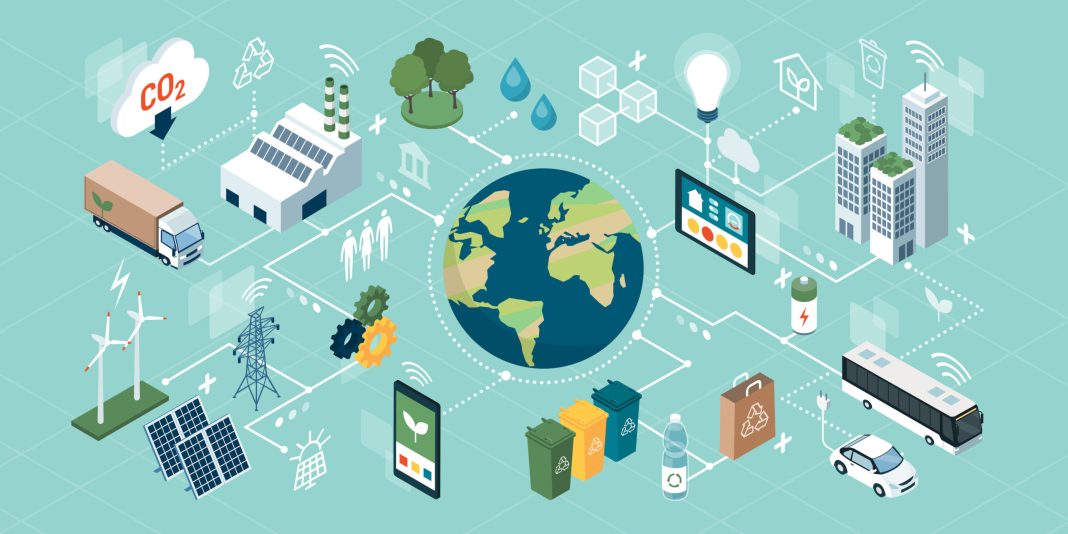In a world grappling with environmental degradation, resource depletion, and the undeniable impacts of climate change, the transition towards a circular economy is not just beneficial but imperative. This economic model, designed to eliminate waste and promote the continual use of resources, stands in stark contrast to the traditional linear economy’s “take, make, dispose” mentality. As we delve into the circular economy’s principles, it becomes clear why adopting this sustainable approach is crucial for our planet’s future.
The Urgency of Transition
The urgency for this shift stems from the alarming rate at which we are consuming finite resources. Our current trajectory is unsustainable; the linear economy contributes significantly to environmental pollution, ecosystem destruction, and greenhouse gas emissions. The World Economic Forum underscores the circular economy’s potential to generate a $4.5 trillion economic opportunity by reducing waste, stimulating innovation, and creating employment.
Principles of the Circular Economy
At the heart of the circular economy are three guiding principles:
- Design out waste and pollution: By rethinking how products are designed and using materials that can be reused or recycled, we can prevent waste and pollution from being created in the first place.
- Keep products and materials in use: This principle focuses on designing products for longevity, promoting repair, and finding new uses for items that might otherwise be discarded.
- Regenerate natural systems: The circular economy aims to enhance natural resources by returning valuable nutrients to the environment, thereby supporting the regeneration of natural systems.
Benefits Beyond the Environment
Economic Advantages
Adopting a circular economy model presents significant economic benefits. It encourages companies to innovate, creating new business models and opportunities. For instance, product-as-a-service models offer customers access to products without the need for ownership, reducing resource consumption and creating a steady revenue stream for businesses.
Social Impact
The circular economy also has profound social implications. It can lead to the creation of green jobs in sectors such as recycling, remanufacturing, and renewable energy. Moreover, it promotes a more equitable distribution of resources, potentially reducing the global wealth gap.
Enhanced Resilience
Transitioning to a circular economy enhances resilience against global shocks, such as supply chain disruptions. By localizing production and reducing dependency on raw materials, societies can better withstand crises, from pandemics to geopolitical conflicts.
Barriers to Adoption
Despite its benefits, the shift to a circular economy faces several hurdles. These include entrenched business practices, consumer resistance to new consumption models, and the need for substantial investment in new technologies and infrastructure. Overcoming these barriers requires concerted effort from governments, businesses, and consumers alike.
Global Initiatives and Success Stories
The European Union’s Action Plan
The European Union is at the forefront of embracing the circular economy, having adopted an ambitious Circular Economy Action Plan. This initiative includes measures to promote sustainable product design, reduce waste, and ensure that resources are kept in the EU economy for as long as possible.
Corporate Innovators
Companies like Patagonia and Philips are leading by example, implementing circular principles in their operations. Patagonia repairs, recycles, and resells its clothing, while Philips has adopted a service model for its lighting solutions, retaining ownership of the products and recycling them at the end of their lifecycle.
The Role of Technology
Innovative technologies play a pivotal role in enabling the circular economy. Digital platforms facilitate the sharing economy, blockchain ensures the traceability of products and materials, and advanced recycling technologies allow for the recovery of resources from waste.
Call to Action
The transition to a circular economy requires a collective effort. Governments must enact policies that encourage sustainable practices, businesses need to innovate and adopt circular models, and consumers must embrace new ways of consuming. Education and awareness are key to driving this transformation.
Conclusion
The circular economy offers a pathway to sustainable growth, resilience, and a healthier planet. By rethinking our production and consumption patterns, we can mitigate environmental impacts, unlock economic opportunities, and build a more equitable world. The time to embrace the circular economy is now.

